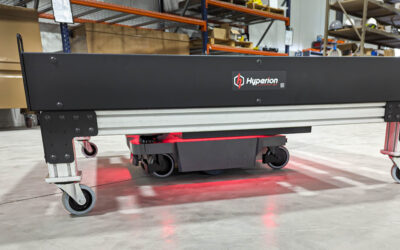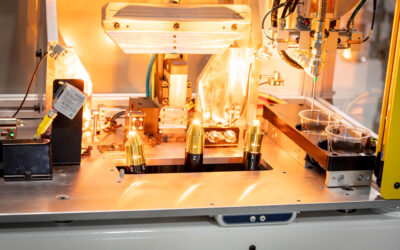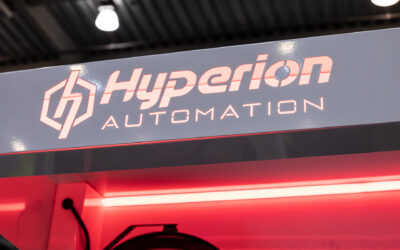In a world where production demands are at an all time high and, according to the US Department of Commerce, unemployment rates are the lowest they’ve been in more than 50 years, companies are facing unique production challenges. It’s becoming increasingly difficult to keep up with the demands of the global economy with the lack of laborers. Industry leaders are looking for ways to optimize line performance by using their current labor force more efficiently.
Boosting efficiency, especially in manufacturing, starts with identifying simple, time-consuming tasks a machine could do. Palletizing, universal to most manufacturing operations, is one task that is easily automated and yields a great reward. We’re more frequently recommending mobile palletizing cells as a solution to a host of manufacturing issues.
“A mobile palletizing cell is better described as a portable palletizing cell,” said Troy Mohrland, vice president of Hyperion Automation. “These robots don’t typically move around a shop floor on their own. It’s more likely that they are moved by another piece of machinery at a less frequent interval, maybe per shift or whatever matches up with the production run.”
One reason mobile palletizing robots are an excellent solution is the level of customization, including:
- Varying in size to suit project needs,
- Equipping cells with vision systems to navigate complex parts coming down a line, and
- Building to accomplish additional jobs on the manufacturing line, such as a simple cleaning cycle.
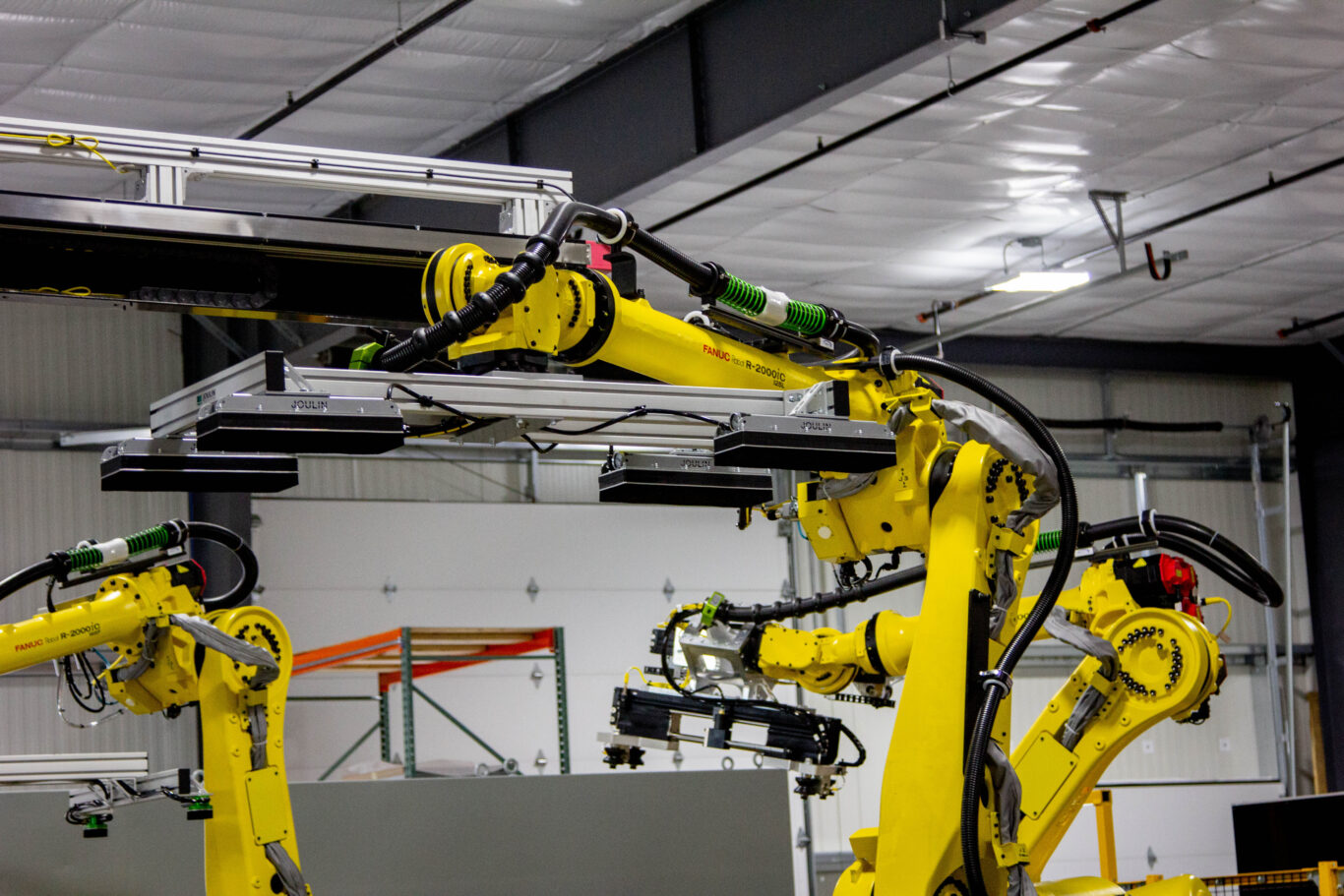
Incorporating Robotics in Existing Layouts
One issue manufacturers often encounter when considering a robotic solution is working around an existing floor plan. Many manufacturers run production operations in a building for decades before considering incorporating robotic technology, meaning the production floor layout wasn’t designed to accommodate additional machinery.
Mobile palletizing cells are fairly customizable, and they can adapt to space and layout constraints during a project’s design phase. With pre-planning, engineers can program them to support several different lines for greater production floor utility with the flip of a switch. This flexibility allows older manufacturing facilities to use new technology without renovating, cutting down on time and expenses.

Real Return on Investment
The goal ROI for our mobile palletizing cells is typically 1–2 years but can vary depending on the scale of the project. For manufacturers that incorporate a mobile palletizing robot in their facilities, ROI comes through several factors. The most obvious is an increase in production efficiency. When a manufacturer can automate simple palletizing tasks, which previously consumed time and labor, there’s room to produce more product. This of course means more sales, a direct and measurable ROI.
Other benefits—like fewer production floor injuries—are often overlooked. But one of the greatest unseen benefits of automation with mobile palletizing cells is how it creates better-educated, valuable employees.
Investing in Employees
Though it’s less directly measurable, clients see a huge ROI in the long-term quality and health of their employees. Many companies hire employees specifically for palletizing, or the task takes up a large part of an employee’s day. By automating palletizing, manufacturers can invest in their current team members, and they often do.
Instead of basic manufacturing work, employees are available to develop more advanced skills. In particular, they can learn how to operate, program and troubleshoot the palletizing cell.
“When an employee is able to learn how robotic automation works, they make themselves extremely valuable team members,” Mohrland said. Training is sometimes expensive and takes time, and demand for these positions is only increasing. Employees who invest in developing specialized knowledge often qualify for higher wages and other types of upward growth, which leads to better retention.
Additionally, team members experience a decrease in hands-on manual labor which positively affects their health. The decrease in work-related injuries saves money for the company both in worker’s compensation fees and in not having to temporarily replace injured workers.
Shameless Plug: What Hyperion Automation Does Differently
Our greatest differentiator is our process. Many automation manufacturers use cookie cutter solutions to solve any problem. In contrast, we go through an extensive discovery process with our clients. This involves talking to everyone affected by the issue at hand including, but not limited to:
- Administrative Team Members
- Operators
- Production Teams
- Maintenance Workers

We take the time to understand exactly what we need to solve. We send a team out to the production floor for days or even weeks to evaluate layouts and the problematic lines. Equally as important, our team spends time understanding the limitations of each project. That could be budget constraints, unique safety precautions, or the sensitivity of handled materials. We do this because we customize each solution for every customer. They’re designed to solve a specific set of problems within the given requirements.
Once we’ve gathered enough information to begin the project, we collaborate with our experienced and innovative team of engineers to design a solution guaranteed to give results. More importantly, we design solutions easy enough for a layperson to run themselves, with adequate training.
“Historically, these solutions have only been accessible to automation engineers. It’s only been in the past few years that other automators have caught up to us and designed solutions that operators can work,” Mohrland said.
Hyperion team members spend significant time integrating the robot with the customer. They go through extensive testing to ensure functionality while solving the problem without creating new ones. Simultaneously, they’re training team members and setting the customer up for success. When our team leaves, they leave behind a client well-trained on how to use their new solution.
But unlike other firms, the engineer-customer relationship doesn’t end there. After implementation, our team is available to clients for troubleshooting. No matter how long ago we completed a project, we’re always ready and willing to return to a job site and fix problems that arise.
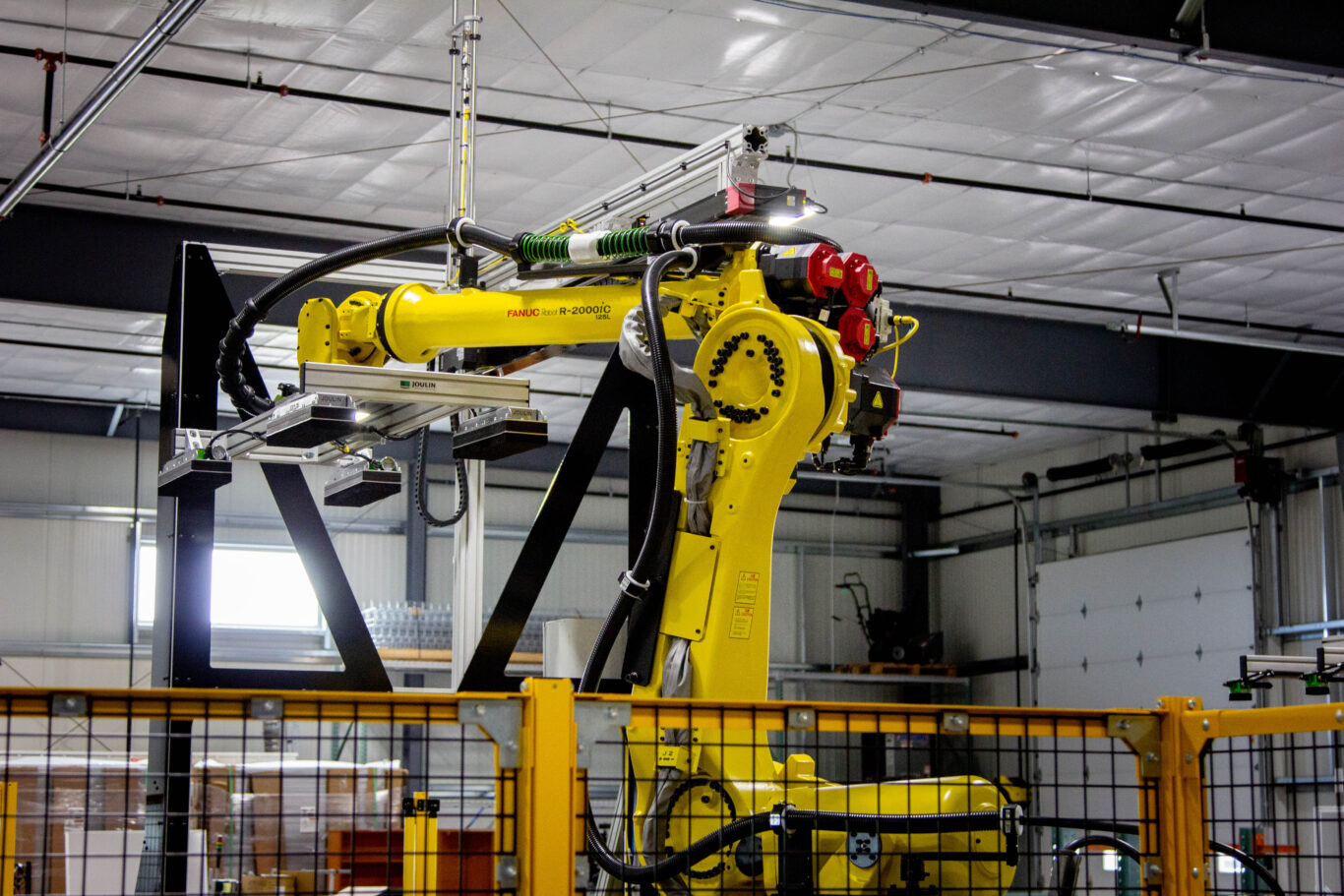
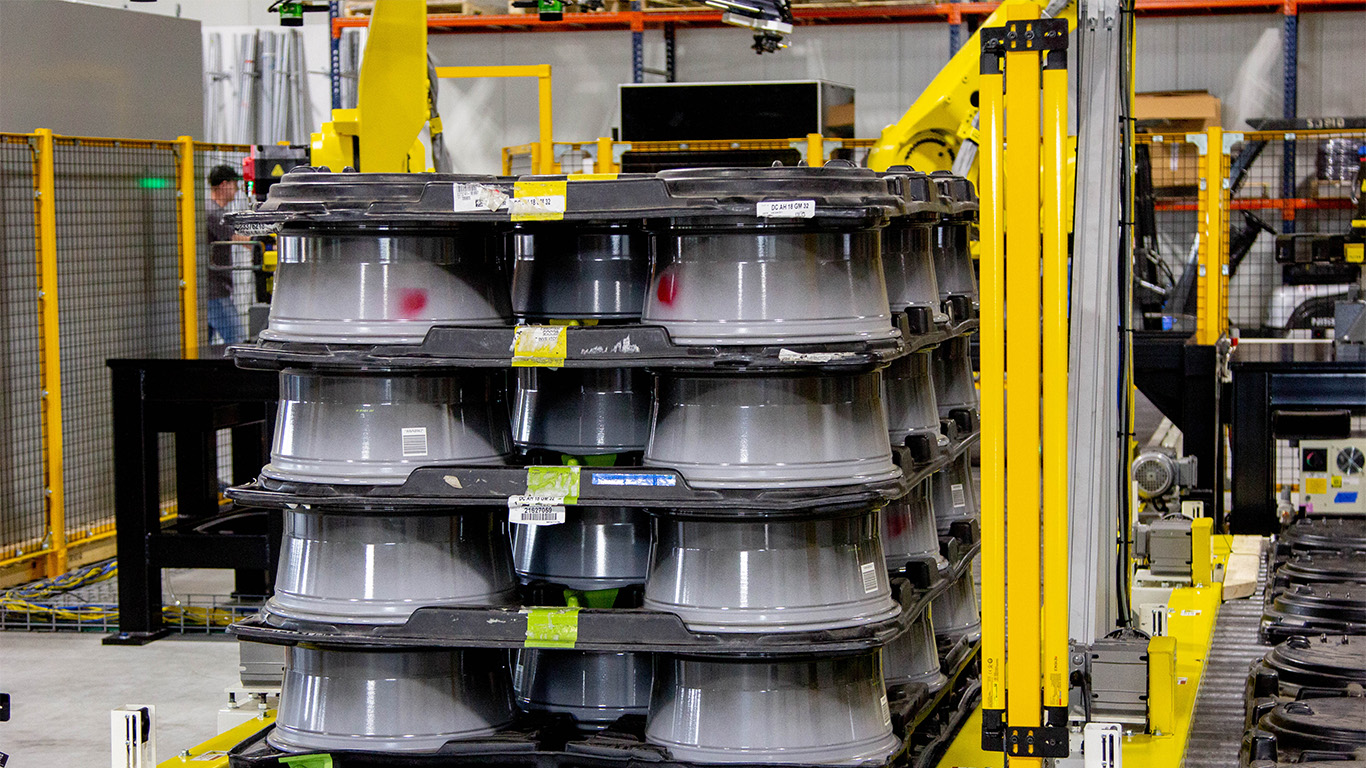

Looking Forward: Mobile Palletizing Cells in Machining
“I see the machining industry really benefiting from mobile palletizing cells in the future,” Mohrland said. “The people in those positions would benefit greatly from being freed of the palletizing task and the robots can be used on several different part lines, giving a potentially big return on investment.”
In the past, the machining industry was too dynamic and didn’t produce enough volume on a single line to justify robotic automation. With their flexibility and moveability, mobile palletizing cells make both issues obsolete. When a machine is compatible with five different manufactured parts, there’s suddenly more than enough volume to keep it busy during all shifts and justify the investment.
“As we continue to produce more innovative solutions, I see automation making a big impact in the world of machining. I think our process will be beneficial to that industry specifically,” said Mohrland.
Have a Complex Problem We Can Solve?
Whether it’s a mobile palletizing cell or another automation solution, we’ll work closely with your team to develop a powerful solution. Let us help you solve your complex system integration challenges with leading-edge technologies and industry-proven techniques.
If you’re looking for a custom automation solution tailored to your unique needs, reach out to us.
